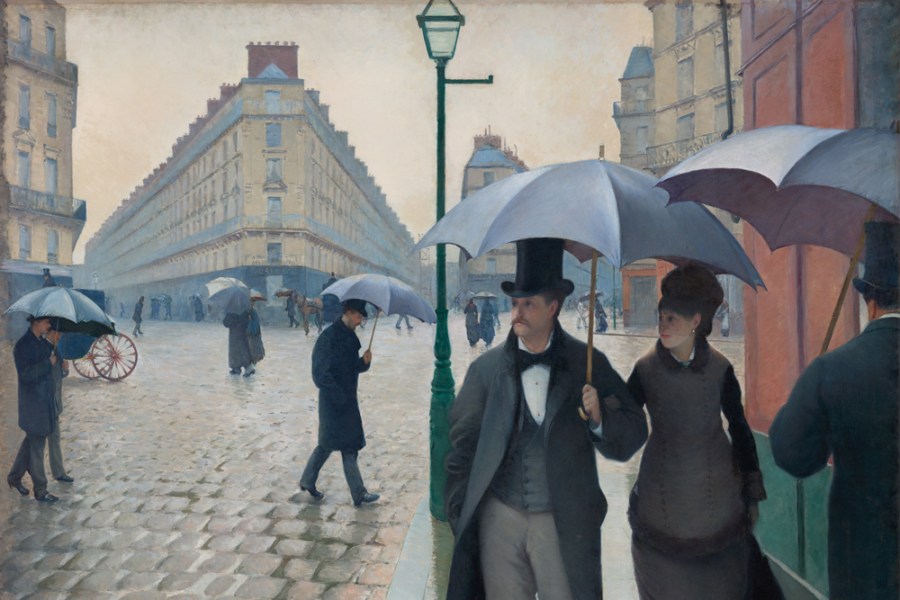So much is remarkable about Gustave Caillebotte’s Paris Street; Rainy Day (1877): the grand building block that both bursts into the midground and recedes into the distance; the rendering of the grey light of a downcast afternoon; the stylish urbanites making the most of a drizzly day – not to mention the painting’s size, at nearly three metres wide. One of the more celebrated paintings at the Impressionist exhibition of 1877, Paris Street; Rainy Day was central to the Caillebotte exhibition that opened at the Musée d’Orsay last year and travelled to the J. Paul Getty Museum in February. The show is now finishing its run at the Art Institute of Chicago, where Paris Street has been in residence since 1964 (29 June–5 October). With their impressive scale, imaginative use of perspective and depictions of energetic activities, such as rowing, gardening and scraping floors, these paintings demonstrate what made Caillebotte stand out among his peers.
Find out more from the Art Institute of Chicago’s website.
Preview below | View Apollo’s Art Diary
Skiffs (1877), Gustave Caillebotte. Milwaukee Art Museum. Photo: John R. Glembin
Floor Scrapers (1875), Gustave Caillebotte. Musée d’Orsay, Paris. Photo: Franck Raux; © Musée d’Orsay, dist. RMN-Grand Palais
Paris Street; Rainy Day (1877), Gustave Caillebotte. Art Institute of Chicago
